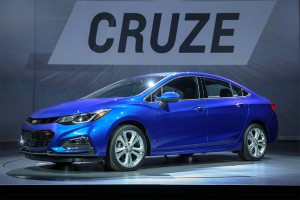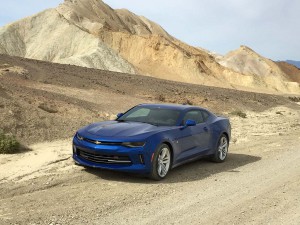Faced with a growing surprise of inventory, General Motors will temporarily idle five of its U.S. assembly plants next month.
The move focuses on slow-selling sedans, such as the Chevrolet Cruze, which have been losing momentum in a market increasingly dominated by sport- and crossover-utility vehicles. GM’s moves follows recent production cuts by Ford, and the decision by Fiat Chrysler to end U.S. production of that maker’s passenger car models.
GM’s decision also comes at a time when industry insiders and analysts are forecasting that the U.S. new vehicle market has reached its peak for the current economic cycle. The only real debate is how far and how fast sales will drop over the next several years, after three years of all-time industry records.
GM has struggled in the market this year, though its troubles have, in part, been self-inflicted as it chose to curb its traditional dependence upon lower-profit fleet sales in order to focus more on the retail market. But while its retail market share is up for the first 11 months of 2016, overall sales are down. In turn, inventories have been rising rapidly.
(U.S. auto sales rebound in November. Click Here for more.)
At the end of last month, GM had an 84-day supply of unsolved vehicles on U.S. dealers, up from 79 the month before. While the maker stressed that inventories “fluctuate before moderating at year-end,” the number is more than a third above what is generally considered an industry norm, between 60 and 65 days worth of vehicles.
In a note to investors, RBC Capital Markets auto analyst Joseph Spak said he was advised by GM’s Chief Financial Officer, Chuck Stevens that the automaker wants to cut inventory to 70 days by the end of the year.
Stevens had previously downplayed GM’s supply issues, noting that the automaker wanted to have a larger-than-normal inventory “ahead of our upcoming crossover launches in 2017.” The carmaker is reportedly preparing for a number of key product introductions, including new versions of the Chevrolet Traverse and GMC Terrain. Both are expected to debut at the North American International Auto Show in Detroit next month.
The closures planned for next month including the Detroit-Hamtramck assembly line and the Fairfax, Kansas plant, both of which will be idled for three weeks. The Cadillac plant in Lansing will be shuttered for two weeks, while plants in Lordstown, Ohio and Bowling Green, Kentucky will close for a week.
GM has been fretting over the need to idle more factories after slashing production at its small car assembly line in the Detroit suburb of Orion Township. That factory will be operating indefinitely on just one shift, rather than the three it was designed for, even with the addition of the new Chevrolet Bolt EV.
Several analysts, including Barclay’s Brian Johnson, have warned that cutting production could put pressure on GM shares. The maker has only lately shown upward momentum, joining the broader stock market in its post-election upturn. But GM shares have been tumbling since news of the plant cuts began to leak out from sources at the United Auto Workers Union.
The cuts primarily impact GM sedans, ranging from the compact Chevy Cruze to the big Cadillac CTS. The maker also will be trimming production of the Chevrolet Camaro sports coupe, which has a 177-day inventory, as well as the Chevrolet Corvette, with a 170-day backlog, according to reports by tracking service AutoData.
The cuts come at a time of growing concern about the auto industry’s health. Sales have been lackluster for much of the year’s second half, though November brought a strong upturn driven, analysts have suggested, by Black Friday sales deals.
Nonetheless, most experts forecast the market has reached its peak, Toyota Vice President Bob Carter earlier this month telling journalists, “We may be over the top,” though he added that the industry should “still have a very healthy year in front of us.” But like other industry executives, Carter said the market is rapidly changing, sedans and other passenger vehicles losing momentum to SUVs and CUVs.
(For more on Carter’s forecast for 2017, Click Here.)
Toyota has had to shift its production mix to reflect that transition, as have other makers, including Ford, which has trimmed production on a number of models in recent months. So has Fiat Chrysler.
And the smallest of the Detroit makers has gone even further. Earlier this month, it halted production of the Chrysler 200, the last sedan it produced in a U.S. assembly plant. FCA’s Sterling Heights, Michigan plant is expected to remain closed for about a year as it is retooled to produce the next-generation version of the company’s Ram 1500 pickup.
(End of the line at Sterling Heights. Click Here for the full story.)




Could it be the Chevrolet front-end styling that mimics Honda, Hyundai/Kia and Toyota that’s causing the backlog of sedans?
The new styling is bleh, also-ran-ish. I just hope they don’t get caught up in the short-term greed of just building C/SUVs and trucks like FCA. Marchionne’s short-sightedness in converting Belvedere to RAM 1500 production and trying to put Jeeps everywhere is reckless.